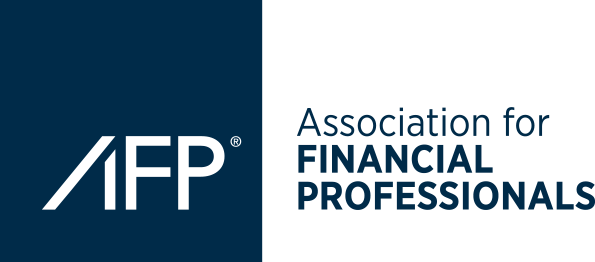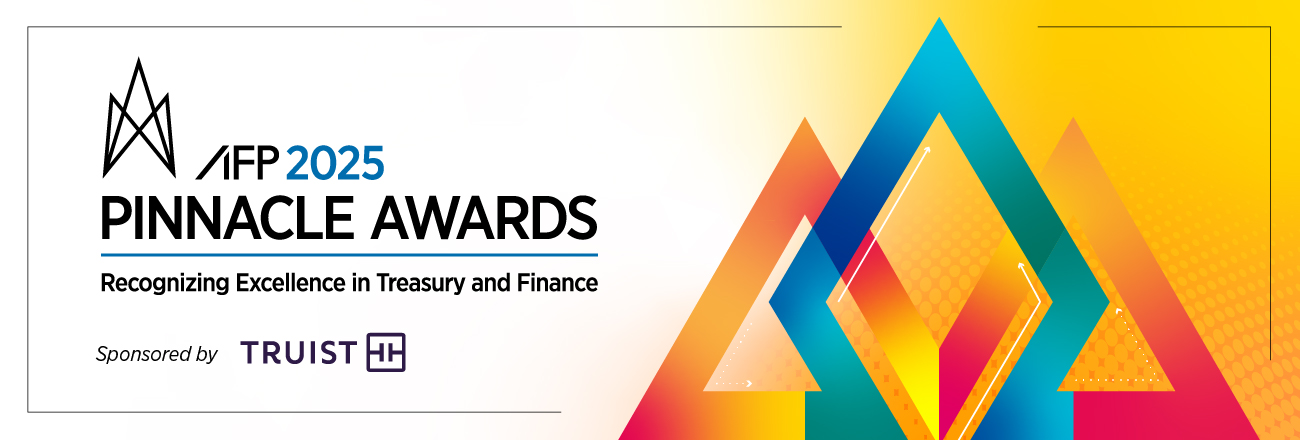Articles
3 Examples of How to Handle Difficult Situations in Finance
- By AFP Staff
- Published: 6/17/2025

Navigating challenging workplace situations is an unavoidable part of working in finance. With a combination of empathy, data-driven analysis and clear communication, finance professionals can resolve conflicts and improve relationships and processes.
In this article, we examine three examples of difficult situations finance professionals face and provide practical guidance on how to handle them. We also share how you can use a difficult past situation to answer a common interview question.
 Interested in a Career in Corporate Finance
Interested in a Career in Corporate Finance
Become a Certified Corporate Financial Planning & Analysis Professional
1. Disagreeing with a Stakeholder on Projected Revenue
Scenario
You're presenting the annual budget to department heads. The Head of Sales vehemently disagrees with the projected revenue numbers, arguing they're too aggressive. They propose their own more conservative forecast but don’t provide supporting data to justify it. How do you defend your analysis while also maintaining a positive working relationship?
How to Respond
Start by establishing neutral ground. Rather than opening with specific targets, which might trigger resistance, focus your conversation on shared objectives such as market growth and company success. This provides an environment of collaboration and helps keep discussions fluid and open.
Consider the perspective of the stakeholder. Everyone has their own unique set of pressures within the organization — e.g., pressure to perform, pressure to meet a target. These pressures are often not observable or known to finance. When you engage in empathetic listening, you can uncover the real concerns behind their hesitation, which gives you an opportunity to address them. It also achieves two key goals: building trust and gathering valuable insights about operational realities.
Then it’s time to leverage your data and analysis. Present your revenue projections transparently, revealing both the data and assumptions that shaped them. You’ll find that market research and historical trends become particularly persuasive when stakeholders understand the methodology.
After you’ve provided the evidence, strategize. Discuss various revenue scenarios — from ambitious top-line goals to conservative estimates — and connect each to corresponding expense structures and incentive systems. This helps stakeholders visualize the full implications of the different paths.
And consider how different business models could influence revenue attainment. Analyzing options, such as subscription-based versus one-time use fees, can reveal untapped potential and provide flexibility in achieving financial targets.
Another powerful model is customer lifecycle analysis. Examining the growth trajectories of top customers and identifying emerging revenue opportunities can ground projections in business relationships that stakeholders recognize and value.
2. Working with Ambiguous Data
Scenario
You're tasked with forecasting revenue for a new product. Historical data is limited, market research is scarce and the competitive landscape remains uncertain. How do you collect the appropriate information and make accurate assumptions? How do you manage ambiguous data?
How to Respond
As you build your business case, clearly identify the key variables and assumptions that drive your valuation for everyone on the project team. Make sure you track and update these items as you move forward in time and, early in the process, establish triggers that indicate when to accelerate or pull back from the effort.
Begin by searching for correlations with similar industries. While your product may be innovative, patterns from adjacent markets can provide valuable reference points, transforming uncertainty into educated assumptions about its potential performance.
When you don’t have a lot of data to go on, you need to be adaptable. Establish flexible strategies that can evolve as new information becomes known. This way you can refine your approach without abandoning your entire framework.
Modern AI tools and advanced analytics can be helpful in identifying subtle patterns in limited datasets. But don’t overlook intuition. The same people who came up with the product have insights you won’t find on spreadsheets. Their "gut feelings" come from expertise and experience and often reflect pattern recognition too subtle for formal analysis — and too valuable to ignore.
There will be uncertainty, of course. Transform it with probability analysis. By modeling multiple scenarios — from worst-case projections to ideal outcomes — you create a decision-making framework that shows the range of possibilities and prevents paralysis.
3. Presenting Complex Financial Information to Senior Management
Scenario
You've prepared a detailed financial analysis of a potential investment, covering both the opportunities and the risks. You present your findings to senior management, but they seem disengaged and ask few questions. Why did this happen? How can you effectively communicate complex financial information to different audiences, ensuring clarity and understanding, while addressing potential misunderstandings?
How to Respond
Effective communication begins with understanding the needs of your stakeholders. This requires you to filter the information, not necessarily to simplify it but to prioritize what matters most to each specific audience. For example, senior executives will typically want to know the strategic implications and material impacts rather than technical jargon, whereas an operational team will want to dive into technical specifications.
Storytelling can transform abstract numbers into a compelling narrative. When you can turn data into a story with context and implications, engagement naturally follows. Visuals enhance the narrative and have the power to make complex relationships immediately apparent in ways that spreadsheets alone cannot.
Transparency is the foundation of financial credibility. Be straightforward with your assumptions, processes and expectations. Transparency doesn't diminish your analysis — it strengthens it. When audiences understand how you arrived at your conclusions, they are more likely to find you credible and trustworthy.
Proactive engagement can transform a one-way presentation into a valuable collaboration. Involving key stakeholders early in the process allows you to gain fresh perspective while ensuring they feel ownership of the final results — and their questions become opportunities for refinement rather than challenges to defend against.
How to Provide an Example of a Difficult Situation in an Interview
Interviewers often ask job candidates to share examples of how they handled difficult workplace situations. The key to answering successfully is to focus less on the conflict itself and more on the process you went through to get to the solution.
Here’s how:
- Choose an example that aligns with the job you are applying for. For example, if the role emphasizes business partnering, choose a situation that caused you to interact with another department. And if it’s a leadership role, highlight team management challenges.
- Make use of the STAR method (Situation, Task, Action, Result) to structure your answer. This helps you create a narrative that’s clear and coherent.
- Situation: Provide context. Describe the problem you faced, who was involved and what was at stake. Keep the context brief and focus on the professional aspects of the situation.
- Task: Explain your role. Why did this involve you? What was the goal or objective you were trying to achieve?
- Action: Relay the steps you took to address the problem or find a solution. Talk about the strategies, skills and resources you utilized, emphasizing your problem-solving skills.
- Result: Explain the results and how the situation was resolved. Include any positive outcomes, and be sure to share what you learned from the experience. If applicable, talk about how you applied those lessons in the future.
- Do not speak negatively about former colleagues, clients or employers. Focus on your actions to demonstrate your ability to work effectively under pressure.
- Prepare. Interviewers may ask about a difficult situation in several different ways, so prepare multiple answers accordingly.
Below are some common interview questions about difficult situations and example answers based on the earlier scenarios.
Question 1: Tell me about a time you had to manage a disagreement with a stakeholder.
Sample answer:
Situation: I was presenting our annual budget plan to the department heads when the Head of Sales argued that the projected revenue figure was too aggressive. He countered with a much more conservative estimate but didn’t provide supporting data.
Task: I knew I needed to defend the integrity of our projections while also preserving the relationship between our departments.
Action: I shifted the conversation to our shared goals around sustainable growth, market competitiveness and strategic investment.
I asked what the sales team was seeing in the field and learned they had just lost a major client and were facing serious internal pressure to manage expectations. With that information, I was able to reframe the conversation to be a collaboration.
I walked them through the revenue model and explained the inputs we had used, potential risks we had accounted for, and customer lifecycle data that showed opportunities for expansion among several of their top accounts.
I also showed them a few scenarios, ranging from conservative to aggressive, and tied each one to a different investment and incentive strategy. This led to a productive, forward-looking discussion about trade-offs and flexibility.
Result: In the end, finance and sales agreed on a revised forecast that was slightly more conservative than the original but underpinned by data and the realities of our business. And from this experience, I learned how disagreements can be turned into opportunities to build trust and respect.
Question 2: Tell me about a time you had to make an important decision but did not have all of the information.
Sample answer:
Situation: My company was preparing to launch a new product in an emerging market. The challenge was that we had limited historical data and very little third-party research. Plus, the competitive dynamics were unclear.
Task: I was asked to forecast the revenue for this new product.
Action: I started by identifying similar markets we’d entered in the past and comparable launches in adjacent industries. These proxies helped me establish early performance benchmarks and any behavioral patterns we could reasonably expect.
Then I reviewed the product’s original business case to understand the assumptions that justified the investment. I also gathered insights from product and marketing leads to help fill in knowledge gaps.
Using this information, I modeled a range of possible outcomes, from conservative to aggressive, and tied each outcome to operational and investment decisions.
Result: In the end, I was able to deliver a forecast that gave a clear sense of the risks and trade-offs while maintaining flexibility within the decision-making framework.
Question 3: Tell me about a time you had to bring a group of senior stakeholders around to your way of thinking.
Sample answer:
Situation: My team was evaluating a potential investment opportunity. We conducted a comprehensive financial analysis and found that the investment opportunity would be favorable for the company.
Task: I was tasked with presenting our findings to non-finance senior leadership, who had not expressed much interest in pursuing this opportunity up to this point.
Action: I knew I wouldn’t have much time to make my point, so I led with a one-slide summary that explained the strategic narrative of what the investment could mean for market positioning, customer growth and long-term value creation. Then I explained the ROI scenarios and strategic trade-offs. For transparency, I shared the assumptions we made in our analysis and used visual dashboards to show sensitivities and risk levers.
Result: Because the leadership team understood both the story and the strategy behind the numbers, they remained engaged throughout my presentation and ultimately approved the investment opportunity.
Related Resource
AFP's FP&A Guide to Communication Skills for Finance provides expert-driven strategies to enhance storytelling, build trust with stakeholders and lead more effective meetings. Fill out the form below to download the guide.
Copyright © 2025 Association for Financial Professionals, Inc.
All rights reserved.

